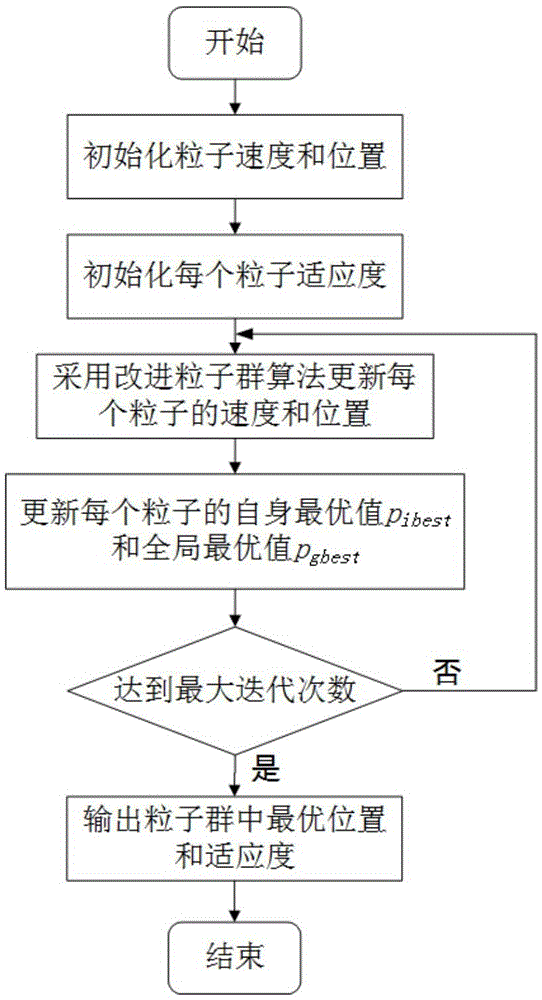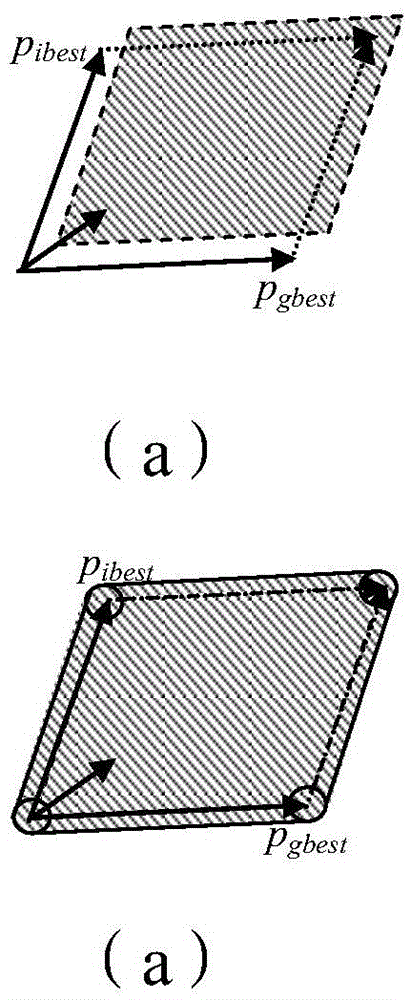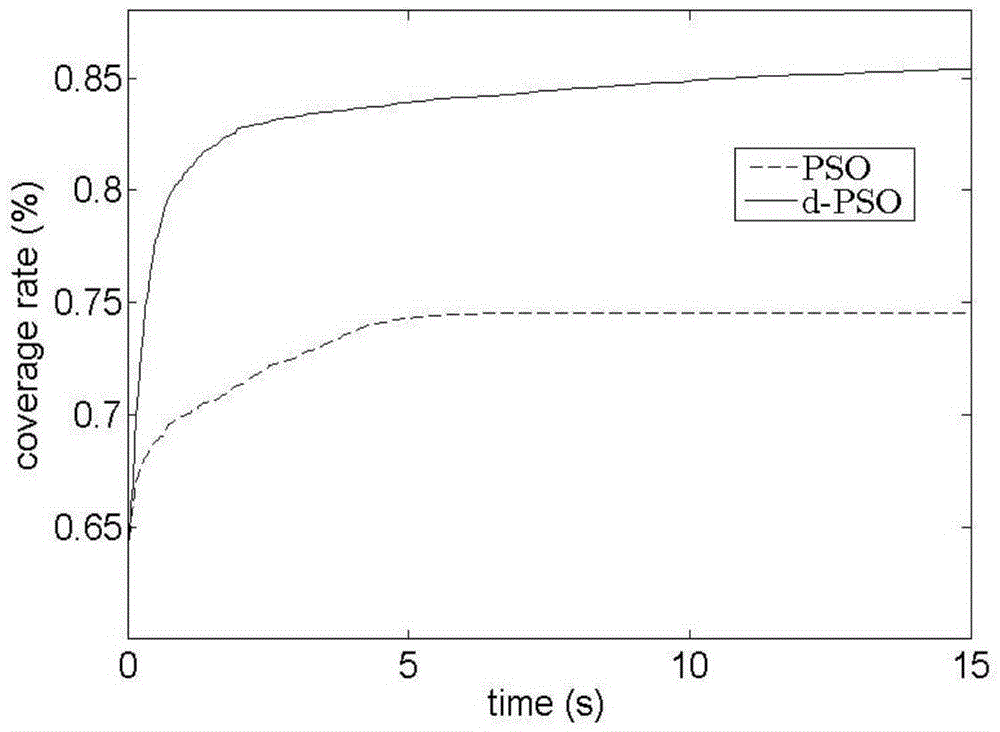A Rapid Optimal Deployment Method for Wireless Network Sensors Based on Particle Swarm
A wireless sensor, particle swarm optimization technology, applied in network planning, network topology, wireless communication, etc., can solve problems such as limited search space, and achieve the effect of simplifying operations, speeding up solution speed, and improving optimization speed
- Summary
- Abstract
- Description
- Claims
- Application Information
AI Technical Summary
Problems solved by technology
Method used
Image
Examples
Embodiment 1
[0046] In view of the above basic ideas, the wireless sensor network targeted by this embodiment is specifically: the wireless sensor network has n wireless sensors, and the sensing radius of each wireless sensor is r, and they are all deployed in a 2-dimensional space. The wireless sensor network of the method is as follows figure 1 As shown, it can be achieved by the following steps:
[0047] Step 1. Establish the particle swarm of the wireless sensor network. There are M 2n-dimensional particles in the particle swarm; at the current time t, for the i-th 2n-dimensional particle, i=1~M, randomly generate a 2n-dimensional position x id (t) and velocity v id (t) as the initial position and initial velocity of the particle, where x id (t)=(x 1 ,y 1 ,x 2 ,y 2 ,x 3 ,y 3 ,...,x n ,y n ), (x 1 ,y 1 )~(x n ,y n ) is the coordinate value of the 1st to nth sensors, v id (t)=(v 1 ,v 2 ,...,v 2n ), v 1 ~v 2n for position x d The change speed of each dimension coordin...
Embodiment 2
[0072] In order to further illustrate the above-mentioned problems, the improved particle swarm algorithm used in the present invention and the traditional particle swarm algorithm are simulated on the wireless sensor network coverage problem. Consider 20 sensors deployed in an area of 40×40m 2 in the area. The size of the particle population is 20, the detection range of the sensor is r=5m, and for the probability detection model, the parameter is r e =0.1r,α 1 =1,α 2 =0,β 1 =1,β 2 =0. The parameter of particle swarm optimization algorithm is set as c 0 =0.4,c 1 =c 2 =1.496, the number of iterations is 1000, the number of iterations set here. The grid size is considered to be 1×1m 2 , that is, 1600 grid points are used to calculate the coverage.
[0073] Considering 50 random experiments, the algorithm performs as image 3 and shown in Table 1. The results show that the improved particle swarm optimization algorithm (d-PSO) has a faster convergence speed, and the...
PUM
 Login to View More
Login to View More Abstract
Description
Claims
Application Information
 Login to View More
Login to View More - R&D
- Intellectual Property
- Life Sciences
- Materials
- Tech Scout
- Unparalleled Data Quality
- Higher Quality Content
- 60% Fewer Hallucinations
Browse by: Latest US Patents, China's latest patents, Technical Efficacy Thesaurus, Application Domain, Technology Topic, Popular Technical Reports.
© 2025 PatSnap. All rights reserved.Legal|Privacy policy|Modern Slavery Act Transparency Statement|Sitemap|About US| Contact US: help@patsnap.com



